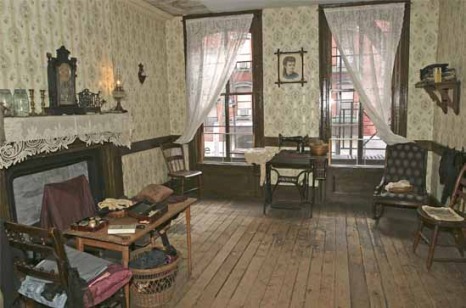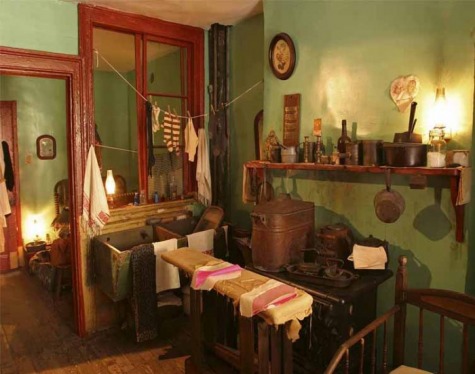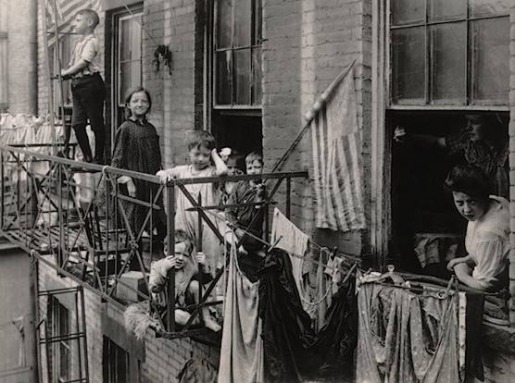Living Conditions in New York City

Over the course of a century, hundreds of thousands of immigrants settled in New York City and other growing cities such as Philadelphia and Chicago. Encountering hostility from native-born Americans upon arriving in the country, most immigrants had nowhere to turn. They moved into poverty stricken neighborhoods and into neglected buildings known as tenements, which are “multifamily dwellings with several apartment-like living quarters”. Tenements were most common in the Lower East Side of New York City, the area in which a majority of immigrants found themselves settling in.
|
|
Tenements were notoriously small in size, most contained no more than two rooms. One of the rooms was used as a kitchen, and the other as a bedroom. Many families worked out of their apartments as well – sewing clothes or rolling cigars. Tenement buildings were usually made of brick and built side by side on narrow streets. As a result, most rooms had only one or two windows, sometimes none. The atmosphere was suffocating. |

It was not until 1867 when New York passed the “Tenement House Act”. This required basic sanitation and health, and that each tenement had adequate ventilation. It also required one outhouse for every twenty people, which was not the case prior to the passing of this act. However, the wave of immigrants that arrived between 1880 and 1924 were not met with any major improvements. Tenements were simply made taller to accommodate the newcomers, creating safety concerns. In fact, conditions worsened during this period. Personal hygiene became an issue because of the lack of running water and the garbage that piled up on the streets, it became difficult for those living in tenements to bathe properly or launder their clothing. This triggered the spread of diseases such as cholera, typhoid, smallpox, and tuberculosis.

As abysmal as the living conditions that immigrants faced upon arriving in New York City, life for them was still better than that in their country of origin. Although most immigrants started from the very bottom, they had the job opportunities available to them that would allow for better housing in the future. Tenements were not reformed until the 1920s, when the United States closed down its borders to most immigrants.
Bial, Raymond, Tenement: Immigrant Life on the Lower East Side (Houghton Mifflin Company, Boston, 2002), 11.
